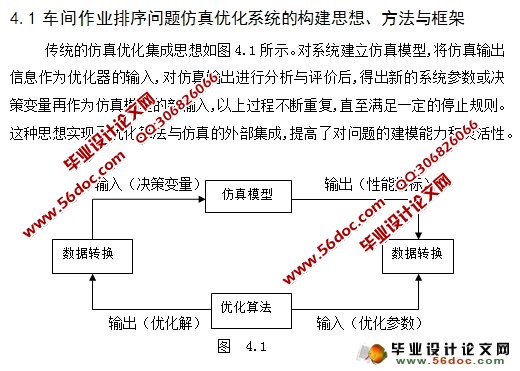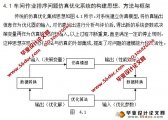具有学习效应的总完工时间流水线排序问题(论文)(任务书,外文翻译,毕业论文12800字,答辩PPT)
摘 要
排序问题的一大特点是:模型繁多,适用于某一模型的算法,只要将模型的条件稍加变化,该算法即不适用. 包括如何对各个部件进行分隔、布线和布局的问题”.排序论是国际上发展最迅速、研究最活跃、成果最丰硕、前景最诱人的学科领域之一特别引人注目的是:随着现代工业的发展,经典的排序模式已被突破,新的模式层出不穷,吸引了越来越多的理论工作者和实际工作者、可控排序、多目标排序、成组分批排序、同时加工排序、准时排序和窗时排序、资源受限排序、不同时开工排序、随机排序、模糊排序、应用排序等,就是其中发展最为迅速的一些新方向. 在我国,对排序问题的研究较晚,虽然早在20世纪50年代末,就有人注意到这一问题一问题的研究,并开始作一些宣传普及的工作;但由于众所周知的原因,对这,直至70年代中才开始,到80年代,对算法感兴趣的人越来越多。现研究工件具有学习效应的单台机器流水作业排序问题与仿真。工件的学习效应指工件的加工时间为所排位置的指数函数。目标函数为极小化总完工时间。给出该问题的数学规划模型。同时对大规模问题给出3个启发式算法,并给出计算结果。
,
关键词:排序,流水作业,学习效应,总完工时间
ABSTRACT
Scheduling problem is a major feature: the model range, the algorithm applies to a model, just a little change in the conditions of the model, the algorithm does not apply. Including the issue of how to separate the various components, wiring and layout. " Sort theory is one of the world's most rapid development, research the most active, the most fruitful achievements, the most attractive prospects disciplines are particularly striking: With the development of modern industry, the classic sort mode has been a breakthrough, new pattern emerging, attracting a growing number of theorists and practitioners, controlled sorting, multi-objective sort, group scheduling, while processing sort, sort, and when the time window of sorting, resource-constrained sort, is not the same start sorting, random order, fuzzy sort, sorting applications, is one of the fastest growing number of new directions. In China, the problem of sorting study late, although in the late 1950s, it was noted that a study of this issue of the problem and begin to make some outreach work.However, due to reasons known to all, this, until the mid-1970s began, to the 1980s, to more and more people interested in the algorithm. In this paper we consider single machine flowshop scheduling problem with a learning effect.The learning effect of a job is assumed to be an exponent function of its position.The objective is to find a sequence that minimizes the total completion time. A mathematical programming model is developed for the problem and three heuristic algorithms are proposed for solving the problem with large scale. Compuational results show that the proposed heuristic algorithms are effective in solving the problem with large scale.
KEYWORDS: scheduling,flow shop,learning effect,the total completion time

目 录
第一章 绪论 7
1.1 流水作业排序问题 7
1.2.1排序问题的分类 11
1.3 排序问题的求解 12
1.3.1可行排序和最优排序 12
第二章 具有学习效应的总完工时间流水线排序 14
2.1 问题描述 14
2.2 预备知识 14
2.2.1学习效应的概念 14
2.3 单机排序问题 16
2.3.1 加权总完工时间问题 16
2.4数学规划模型 17
2.5 启发式算法 18
2.5.1 启发式算法1 18
2.5.2 启发式算法2 19
2.5.3 启发式算法3 19
2.6 数值试验 19
2.6.1基本假设 19
2.6.2数据模拟 20
第三章 流水线作业排序模型仿真 22
3.1仿真软件介绍 22
3.2 Liken仿真软件算法介绍 22
3.2.1 EDD算法规则 22
3.2.2 加权最短作业时间法则(WSPT) 22
3.2.3 SPT算法规则 22
3.3 仿真 24
3.3.1仿真前提条件 24
3.3.2仿真计算 24
第四章 仿真分析与算法优化 29
4.1 车间作业排序问题仿真优化系统的构建思想、方法与框架 29
4.2 算法优化 29
第四章 总结与展望 31
5.1 论文总结 31
5.2后续与展望 32
致 谢 33
参考文献 34
毕业设计小结 35
|



